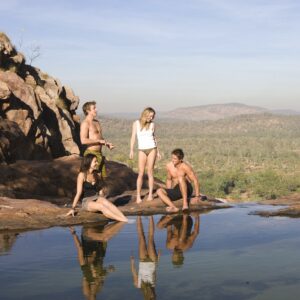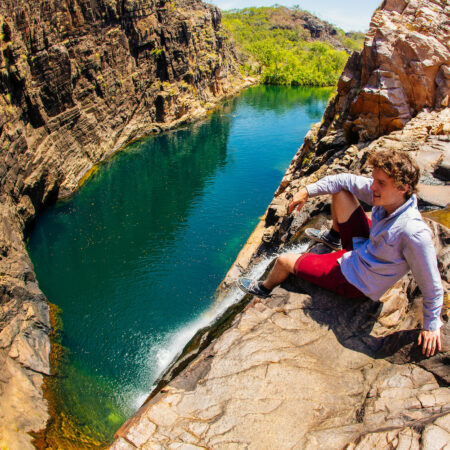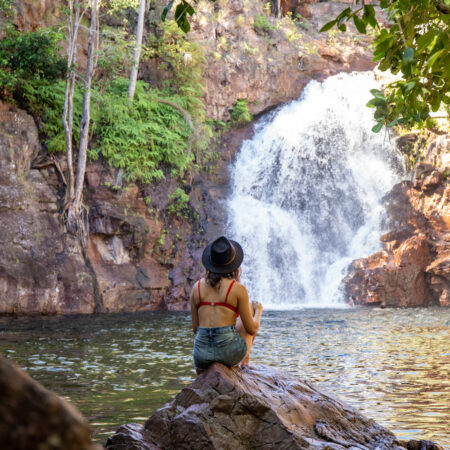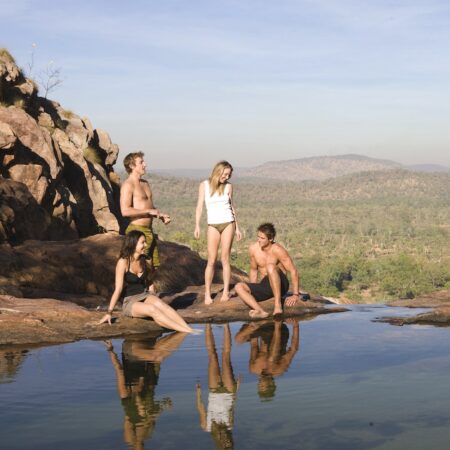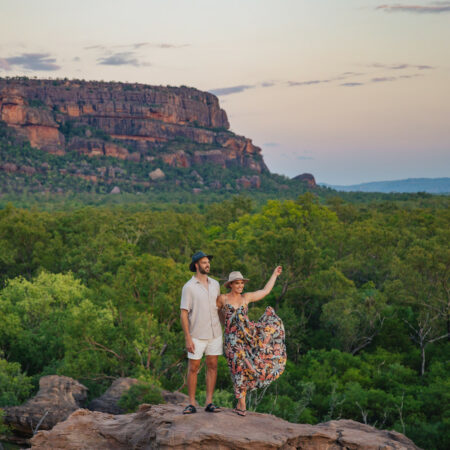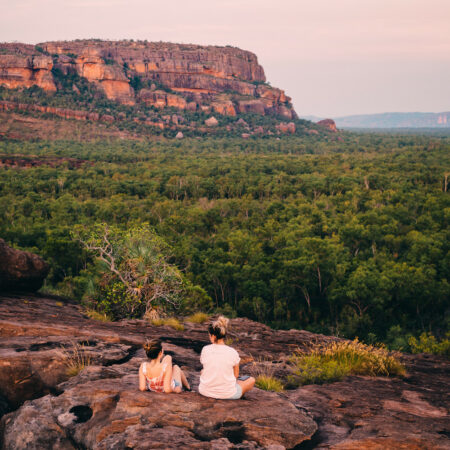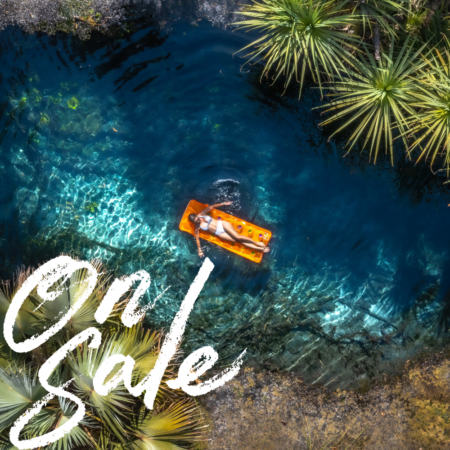Wet Season or dry? When is the best time to visit Kakadu National park?
We let you know the best time to head to the Northern Territory to adventure into Kakadu National Park.
The climate of the Top End of Australia in the Northern Territory can be unfamiliar to visitors from overseas. Its unlike other areas of Australia as we have distinct wet and dry seasons.
Kakadu’s Aboriginal owners recognise six seasons, they see these in nature by noticing subtle changes in weather, which plants are in flower, and which bush foods are abundant.
When you google ‚perfect time to take a Kakadu Tour‘ there can be very vague information like ‚July and August has no rain‘. This can be misleading.
WE THINK ANY TIME OF THE YEAR KAKADU NATIONAL PARK HAS A LOT TO OFFER, READ ON TO FIND OUT WHY.
Is the wet season the best time to visit Kakadu National Park?
Advantages of Visiting Kakadu During the Wet Season:
Challenges of Visiting During the Wet Season:
Weather Uncertainty: Heavy rainfall and occasional thunderstorms can lead to flooding and road closures, limiting access to certain areas of the park.
Limited Accessibility: Some sites and tours may be unavailable or restricted due to weather conditions, impacting your ability to explore the park fully.
Can you visit Kakadu in the wet season?
The tropical summer from November to April is when the Top End truly comes alive. It’s when the waterfalls are at their fullest and most majestic, the wetlands transform in a blaze of colour, and millions of migratory birds return to nest in its national parks As you can see the wet season is not so bad after all!
“The tropical summer from November to April is when the Top End truly comes alive..” Real Adventure Group
When is the wet season in Kakadu National Park?
Kakadu’s wet season is from November to March. We really enjoy the Top End at this time as it brings epic thunderstorms, bright green landscapes and the flooding of the Yellow Water Billabong. We also like that there are less visitors in Kakadu, so it makes you feel like you are an explorer!
Check out our article: Can you visit Kakadu and Litchfield in the Wet Season? Our 3 day Kakadu Tour tour is our most popular for that time, we have a modified wet season itinerary.
As some of the attractions of the park become flooded during the wet season, other areas become lush waterfalls. So, we have a lot of options to take you to the most spectacular places for swimming and hiking. We are very lucky Kakadu National park is so large at 20,000 Kilometres squared. There is always somewhere to explore!
Mosquitos can be more prevalent during the wet season in Kakadu, which is why we refrain from sleeping outside in swags and use our permanent tents on all trips. You will also be protected from any nightly rainfall in our waterproof tents. We find that the wildlife is more abundant during the wet season as they flock to the areas of water…so great chances for bird spotting at this time of year.
Is the dry season the best time to visit Kakadu National Park
Advantages of Visiting During the Dry Season:
Challenges of Visiting During the Dry Season:
Visiting Kakadu in the Dry Season
June, July and August are the ‚coolest‘ months in Kakadu National Park. When we say cool, temperatures are still 86F or 30c everyday. However, it drops a little at night and doesnt have such high levels of humidity. They are also our busiest months in Darwin. We have the Australian school holidays which means lots of Australian families travel to the Top End and take a Kakadu tour. So if you are coming from overseas then please book 3 or 4 months in advance. This is a good idea anyway as you will be able to take advantage of our EARLY BIRD DISCOUNTS!
Crocodiles tend to be more visible in colder weather, as they warm themselves up in the sun. So travelling during the dry season you have more of a chance to spot these awe-inspiring creatures!
We are currently filling fast for all our Kakadu National Park tours July and August. If you would like to travel from Darwin then please let us know ASAP.
When do Jim Jim Falls and Twin Falls open?
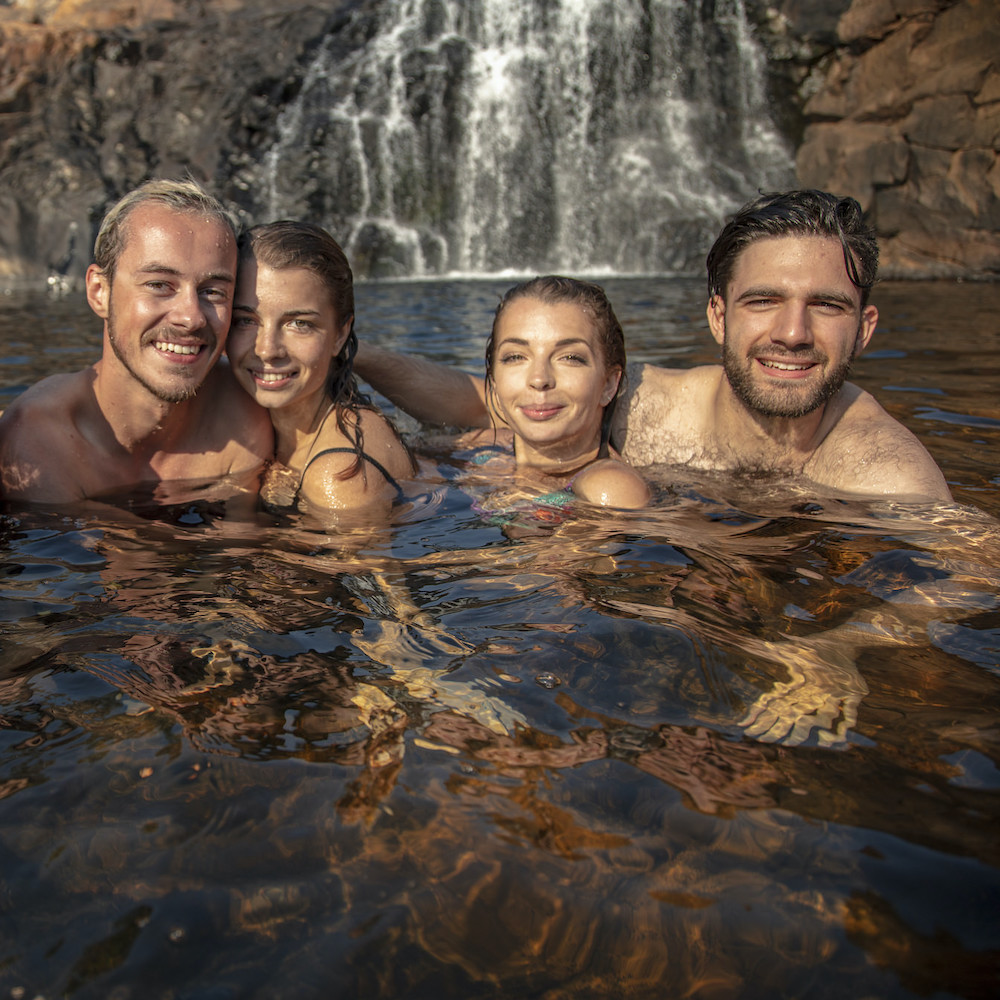

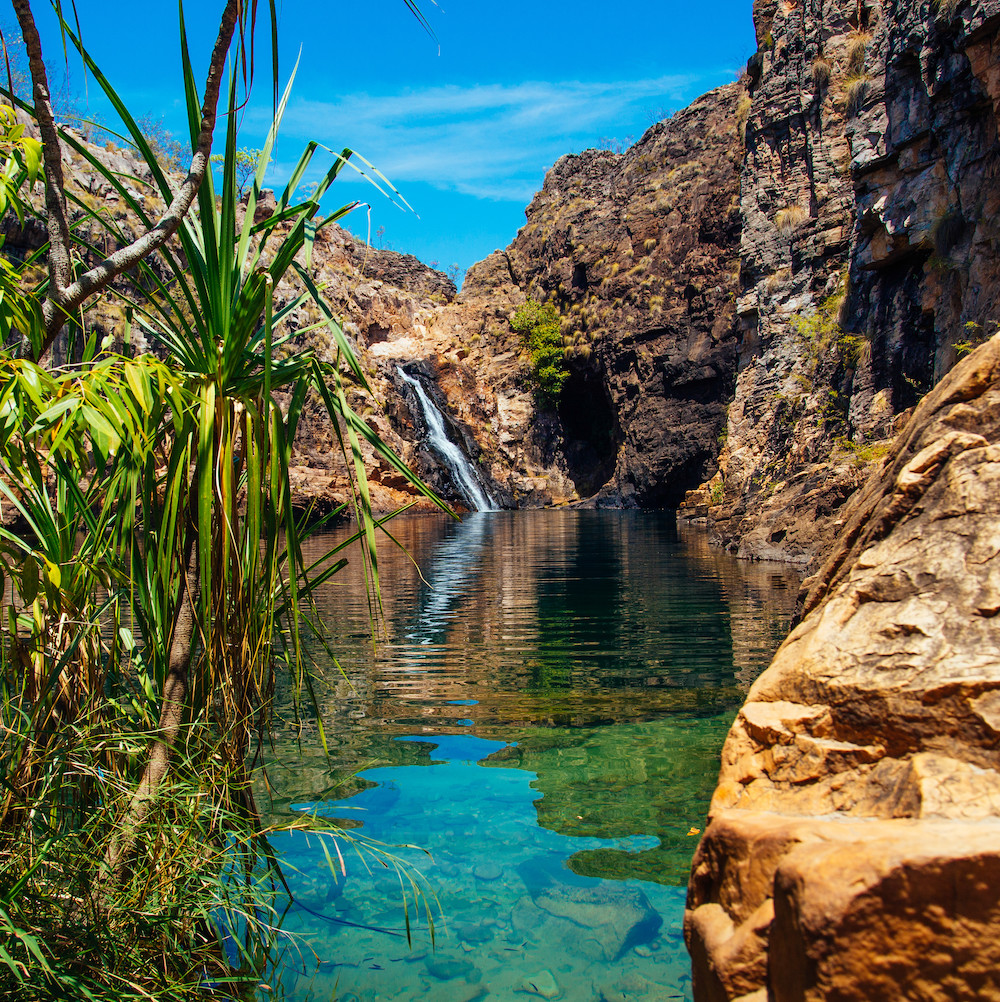
The Best time to visit Kakadu on tour
Optimal Timing for Kakadu Tours: Unlocking Your Top End Adventure
Planning a journey to Kakadu National Park from Darwin during the dry season offers a plethora of remarkable touring opportunities. Our array of tour options caters to diverse preferences, ensuring a memorable experience. Ranging from our immersive 3-day Kakadu and Litchfield tour to our comprehensive 5-day expedition covering Kakadu National Park, Litchfield National Park, and Katherine Gorge (Nitmiluk), we’ve got you covered.
These exclusive tours are available for departure between the months of April and October, with a special highlight on the high-demand months of June and July. Given the immense popularity of these prime months, it’s crucial to secure your spot early for the anticipated year of 2024. Don’t miss out on this chance to immerse yourself in the beauty of the Top End’s most iconic national parks.
For travel in the dry season from Darwin we have plenty of touring options. From our 3 day Kakadu and Litchfield tour to our 5 day tour that takes in the Top 3 National Parks in the Top End, Kakadu National Park, Litchfield National Park and Katherine Gorge (Nitmiluk) These tours depart from April to October, June and July fill super fast so get in quick for 2024.
Check out more about the 3 day trip Kakadu and Litchfield.
Got more time? Try our 5 Day 4WD Top End Tour
Adventure further off the beaten track and visit ArnhemLand.
Real Aussie Recommendations
- Whenever you are planning on visiting Australia please include Kakadu National Park in your schedule!
- One tip: Make sure your camera has a full battery because Kakadu National park has endless lush scenery waiting for you.
-
20-tägiges Tourpaket von Melbourne nach Darwin
20-tägiges Tourpaket von Melbourne nach DarwinReise mit uns auf dieser Abenteuer-Tour von SA ins Top End und erlebe das Beste des australischen Outbacks.Reise-Stile:Budget$4,975 -
5-tägige Kakadu-Campingtour
5-tägige Kakadu-CampingtourBesuchen Sie die Koolpin Gorge sowie die Jim Jim Falls, Maguk, Ubirr Rock und Gunlom Falls. Inbegriffen ist eine Wildtier-Kreuzfahrt auf den Yellow Waters bei Sonnenuntergang.Reise-Stile:Budget$1,750 -
5 Tage Darwin Work and Travel Arrival Package
5 Tage Darwin Work and Travel Arrival PackageBeginnen Sie Ihr Work & Travel Abenteuer in Australien im Northern Territory mit dem Darwin Work and Travel Arrival Package.Reise-Stile:Budget$479 -
1 Tag Kakadu-Wildnis und Kulturtour
1 Tag Kakadu-Wildnis und KulturtourNehmen Sie an unserer Tagestour durch den indigenen Kakadu-Nationalpark teilReise-Stile:Komfort$315 -
18-tägiges Tourpaket von Adelaide nach Darwin
18-tägiges Tourpaket von Adelaide nach DarwinFahren Sie auf dem Explorer Highway durch das Herz Australiens und beobachten Sie, wie sich die weiten Landschaften vom Ozean in die trockene rote Wüste und schließlich in ein grünes tropisches Paradies verwandeln.Reise-Stile:Budget$4,095 -
3 Tage Camping Kakadu Tour
3 Tage Camping Kakadu TourEntdecken Sie die natürliche Schönheit und kulturelle Bedeutung der Nationalparks Kakadu und Litchfield auf einer 3-tägigen Campingtour.Reise-Stile:Budget$840 -
5 Tage Top End und Arnhem Land Abenteuer
5 Tage Top End und Arnhem Land AbenteuerUralte Felsmalereien und atemberaubende Wasserfälle auf diesem spektakulär abwechslungsreichen 5-tägigen Top-End-Abenteuer.Reise-Stile:Budget$1,616 -
5-tägige Kakadu- und Litchfield-Komfort-Abenteuertour
5-tägige Kakadu- und Litchfield-Komfort-AbenteuertourDiese 5-tägige Tour ist die perfekte Kombination aus einem Top-End-Abenteuer während des Tages und dem bequemen Entspannen im Innenbereich.Reise-Stile:Budget$1,950 -
4-tägige Kakadu-Nationalpark-Tour
4-tägige Kakadu-Nationalpark-TourErkunden Sie die Überschwemmungsgebiete von Ubirr, Twin und Jim Jim Waterfalls sowie die Butterfly Gorge auf unserer voll ausgestatteten Komfort-Abenteuertour.Reise-Stile:Komfort$2,260 -
3 Tage 4WD Kakadu und Litchfield Tour
3 Tage 4WD Kakadu und Litchfield TourErkunde das „Top End“ auf dieser 3-tägigen Campingtour durch den Kakadu- und Litchfield-Nationalpark.Reise-Stile:Budget$945

